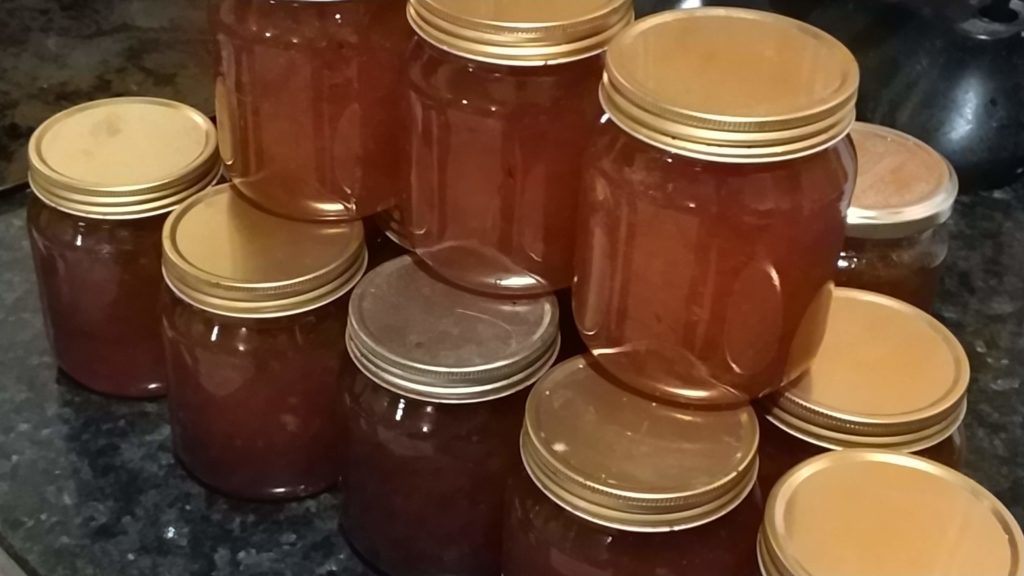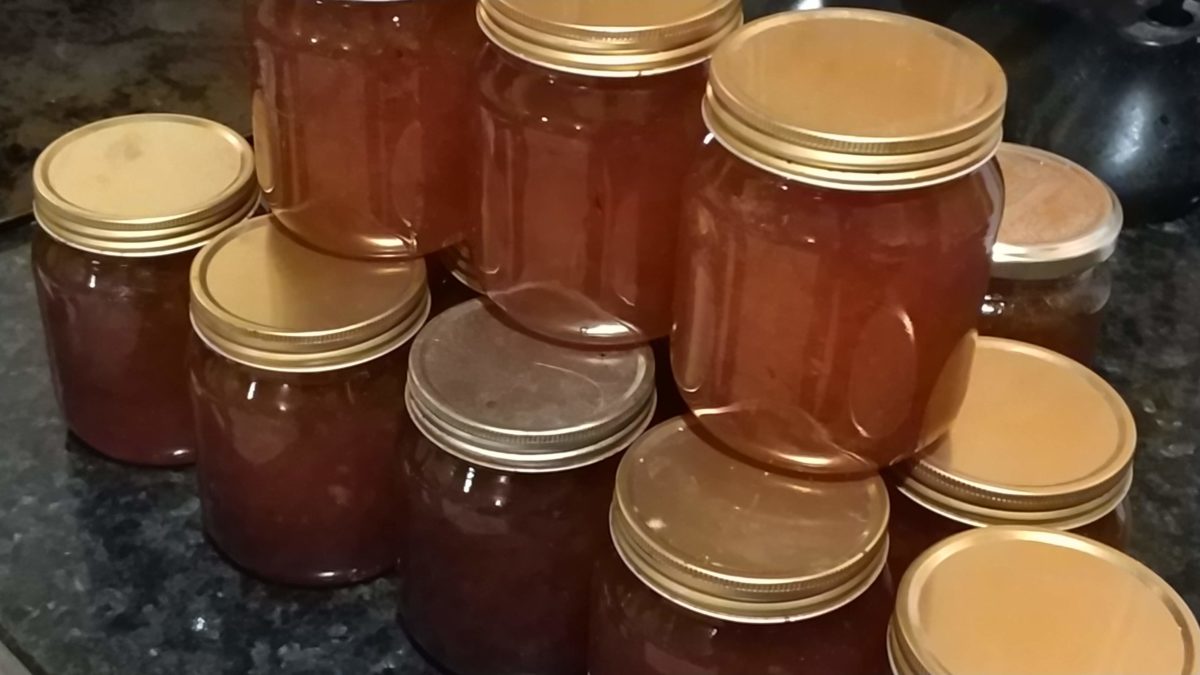A few people have asked for my marmalade recipe over the years, and up to now I’ve never bothered writing it down because it’s pretty much just the basic one you’d find in any simple cookbook. Nevertheless, here it is. Partly so I have somewhere to point people, and partly as a handy place to remind myself how much I normally make, so I know I’ll have enough to last the year.
TL;DR
Here’s the basics:
1:2:2 oranges/sugar/water, plus half a lemon for every pound of oranges. Pips & pith in muslin, then boil with water, juice and orange peel for 1½ to 2 hours, until half the water’s gone. Add sugar, heat gently and stir until dissolved, then boil for 15 minutes. Test for set, and boil more if necessary. Pour into heated jars.
Now for the long version …
Ingredients
This is how much I make in one batch, and will produce somewhere around 12–14 jars. Two batches lasts me nearly a year, and three gives me a few jars left over (I eat a lot of marmalade). I guess 2½ would be about right.
Seville oranges generally only appear in the shops for a few weeks around January, at least in the UK, so get them while you can. Quantities aren’t particularly critical, which is why the imperial and metric versions don’t quite line up.
- 4lb/2kg Seville oranges
- Two lemons
- 8lb/4kg preserving sugar (not jam sugar, which has added pectin)
- 8pt/4l water
You’ll also need a jam pan (or some other massive saucepan – it should be big enough for at least twice the amount of water you’re starting with), some muslin squares (Lakeland sell them), jars, and a nice sharp chef’s knife.
Preparation
Put the muslin in a sieve above a bowl (or the pan), and squeeze the lemon juice and pips into it. Discard the outside of the lemons.
Get rid of the little stalk things from the oranges, and cut them into quarters (the oranges, not the stalks).
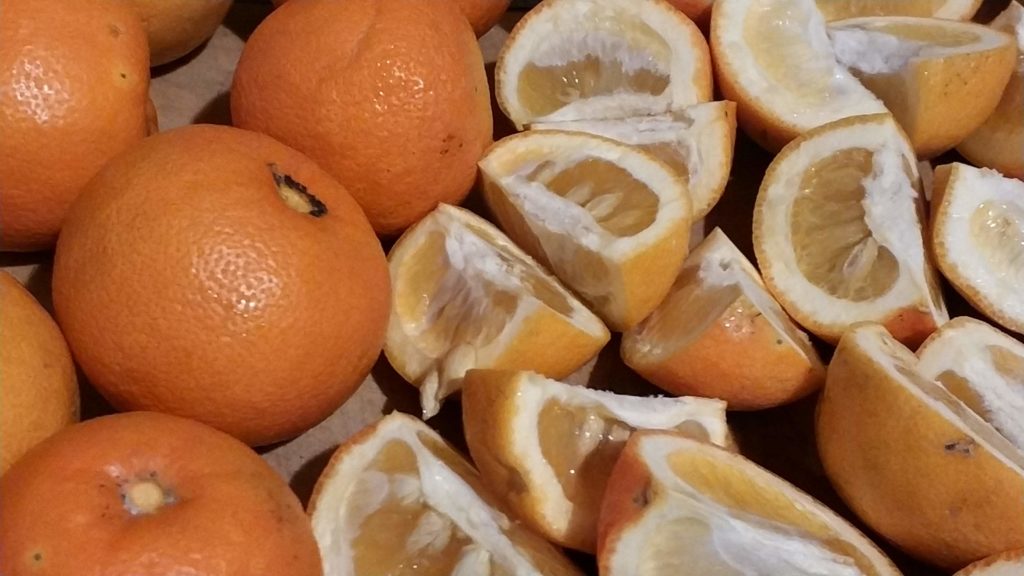
Give each quarter a quick squeeze into the muslin, then scrape the pips and pith in as well. You want to boil these bits up to get the pectin that makes the marmalade set, but you don’t want them in the finished product, which is where the muslin comes in.
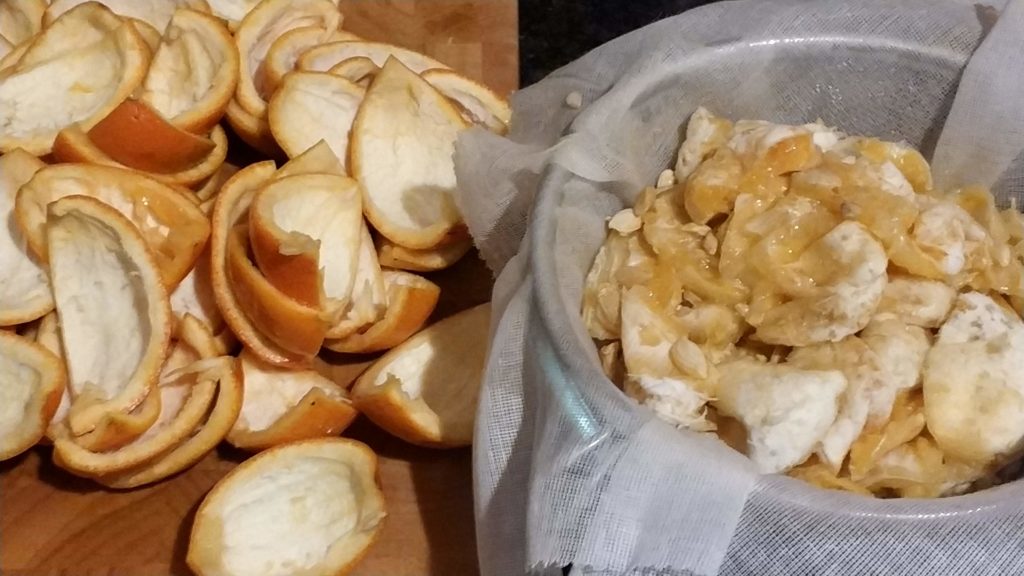
Once everything’s in the muslin square (you might need two), pull the corners together, give it a good squeeze, then tie it up with string. Put the tied-up bag(s) into the pan, along with the orange juice and the water.
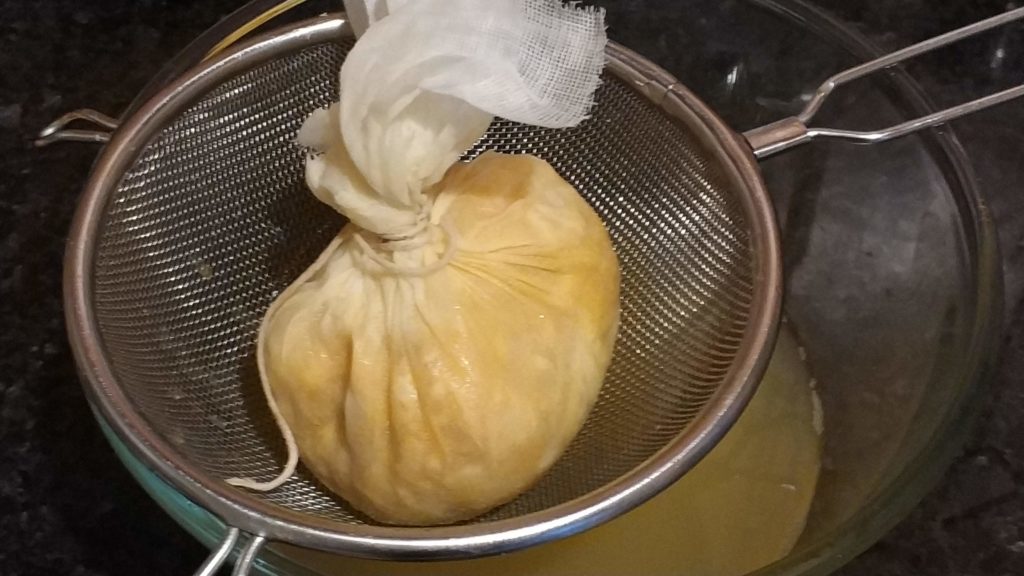
Now for the tedious bit – cutting all those orange peel quarters into thin strips. If you like chunky marmalade you’re in luck, as it won’t take quite as long, but either way you’ll probably want to put the radio or a podcast or something on to relieve the boredom. Keep your wits about you though, as it’s easy to lose concentration and shave a bit off the end of one of your fingers.
I find the easiest technique is to cut each bit of peel into three lengthwise, then finely chop across the three bits.
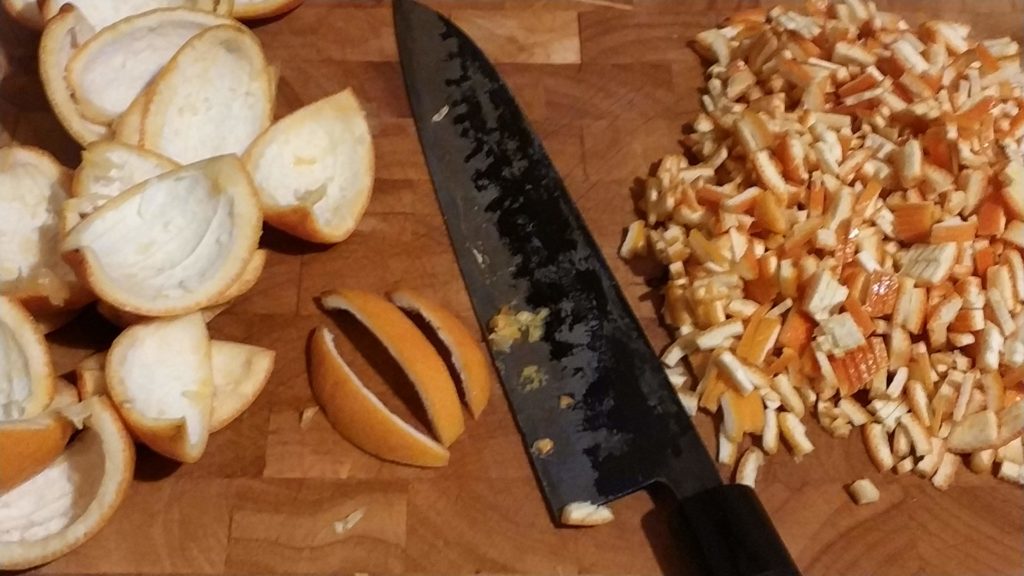
Add the chopped peel to the pan, and bring to the boil. Simmer uncovered for 1½ to 2 hours, until the volume of water has reduced by about half (and what’s left will mostly be peel). Remove the bag(s) of pips, then scrape any pieces of peel back into the pan, and squeeze as much juice as you can back into the pan too (this is harder than it sounds, because it’ll obviously be far too hot to touch).
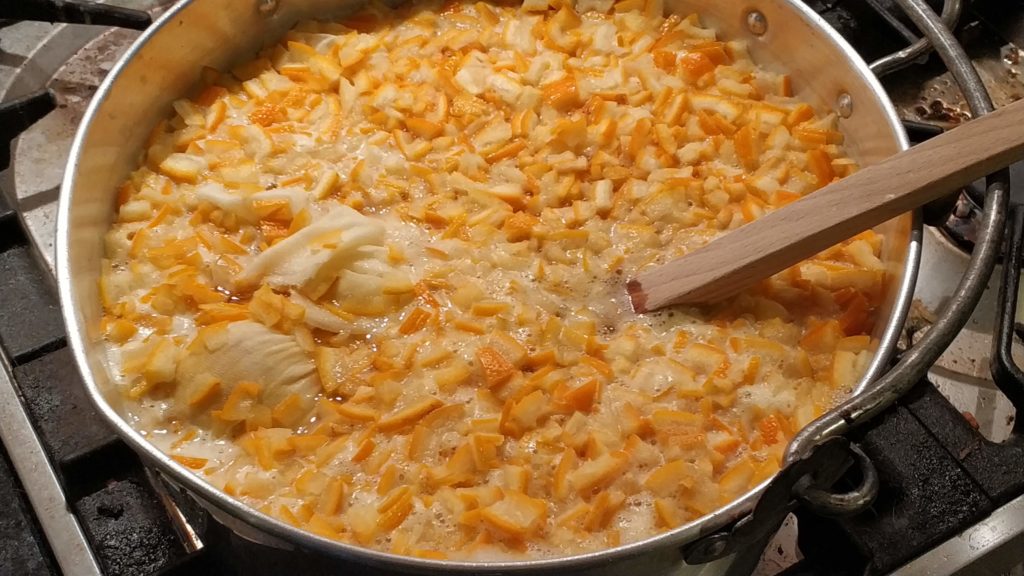
Now add the sugar. This is the point when you realise that marmalade is basically just sugar with some bits of orange peel in it.
At this point, put your jars (without their lids) in the oven at 100ºC (to avoid any risk of cracking when you pour the marmalade in), and put a small plate or saucer in the fridge (you’ll use this to test for the setting point later).
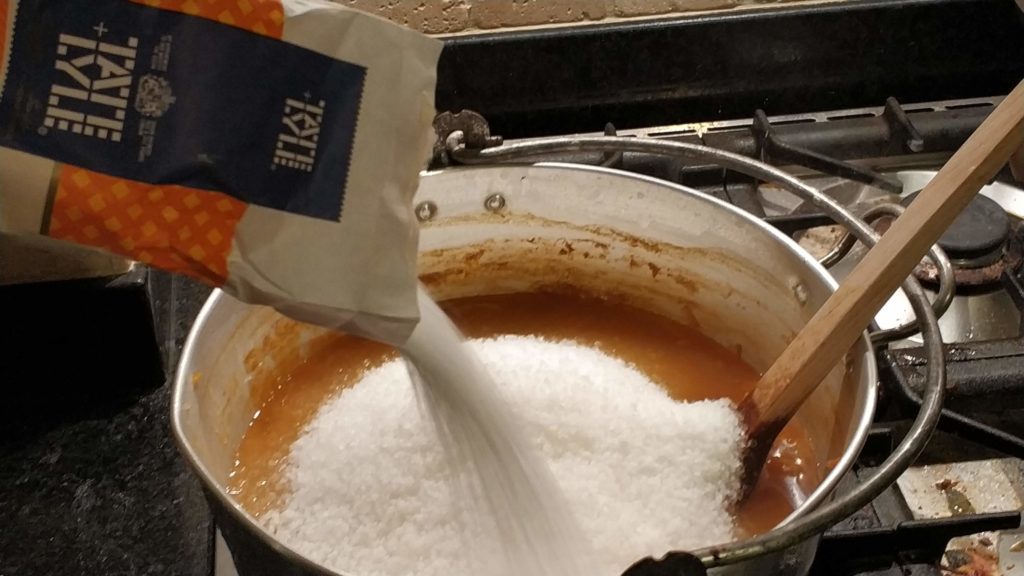
Heat gently, and keep stirring until the sugar has all dissolved. Then turn up the heat and bring to the boil. Boil vigorously for 15 minutes, stirring occasionally to stop it sticking to the bottom of the pan. A word of warning: as you scrape the bottom of the pan with the spoon, it tends to encourage some mildly volcanic eruptions, and you probably don’t want to be splashing boiling syrup on yourself.
If you do end up burning some of the peel, don’t worry too much – it doesn’t seem to particularly affect the final flavour. You’ll end up with a darker finished product though, so maybe chuck in the word “caramelised” and pretend it was deliberate.
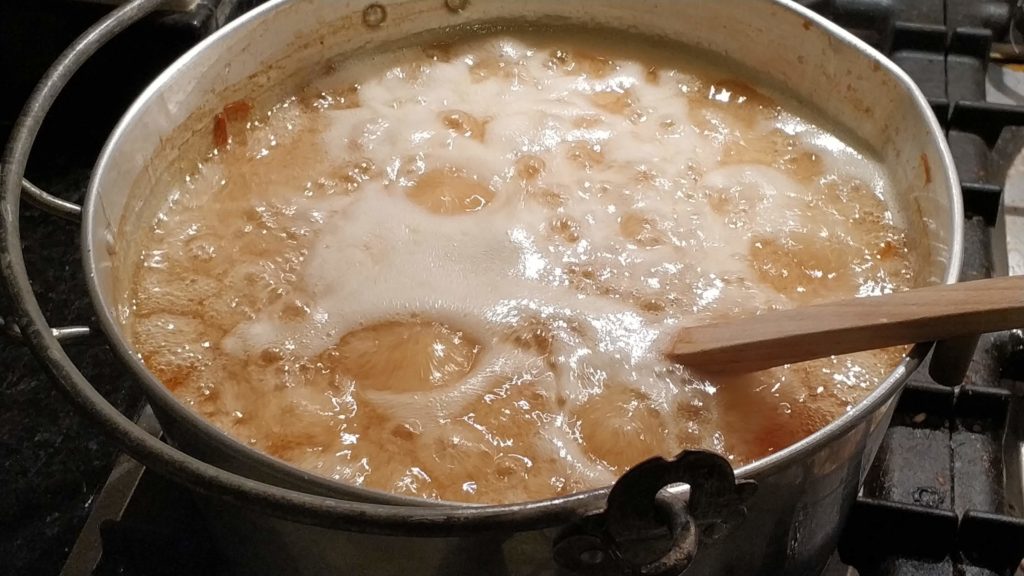
After 15 minutes, turn off the heat, take half a teaspoon of marmalade out of the pan and tip it onto the cold plate from earlier. Leave it for a minute, then drag your fingertip across it. If it forms a skin (or has already taken on a jelly-like consistency), then your marmalade is ready. If not, boil for another five minutes and try again. I’ve occasionally had nightmare batches that took ages; probably because I hadn’t boiled away enough water.
Leave to cool slightly (five minutes or so is fine), then pour, ladle or otherwise decant into jars. A jam funnel will greatly reduce the amount of mess generated by this stage, although it won’t be able to help with the inevitable sticky splashes you’ll already have on and around your cooker.
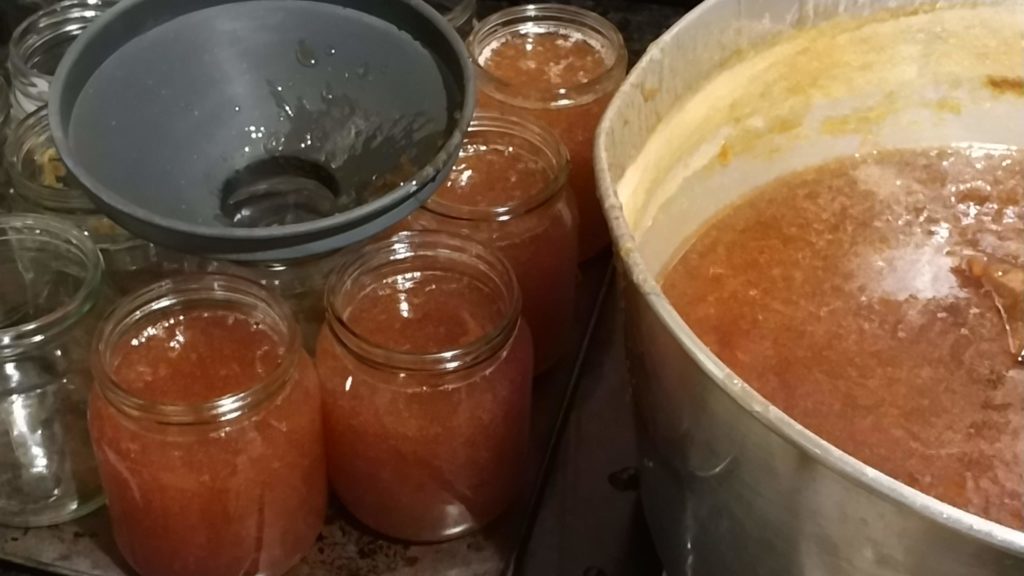
And that’s it! Ready to spread on your toast in the morning.
